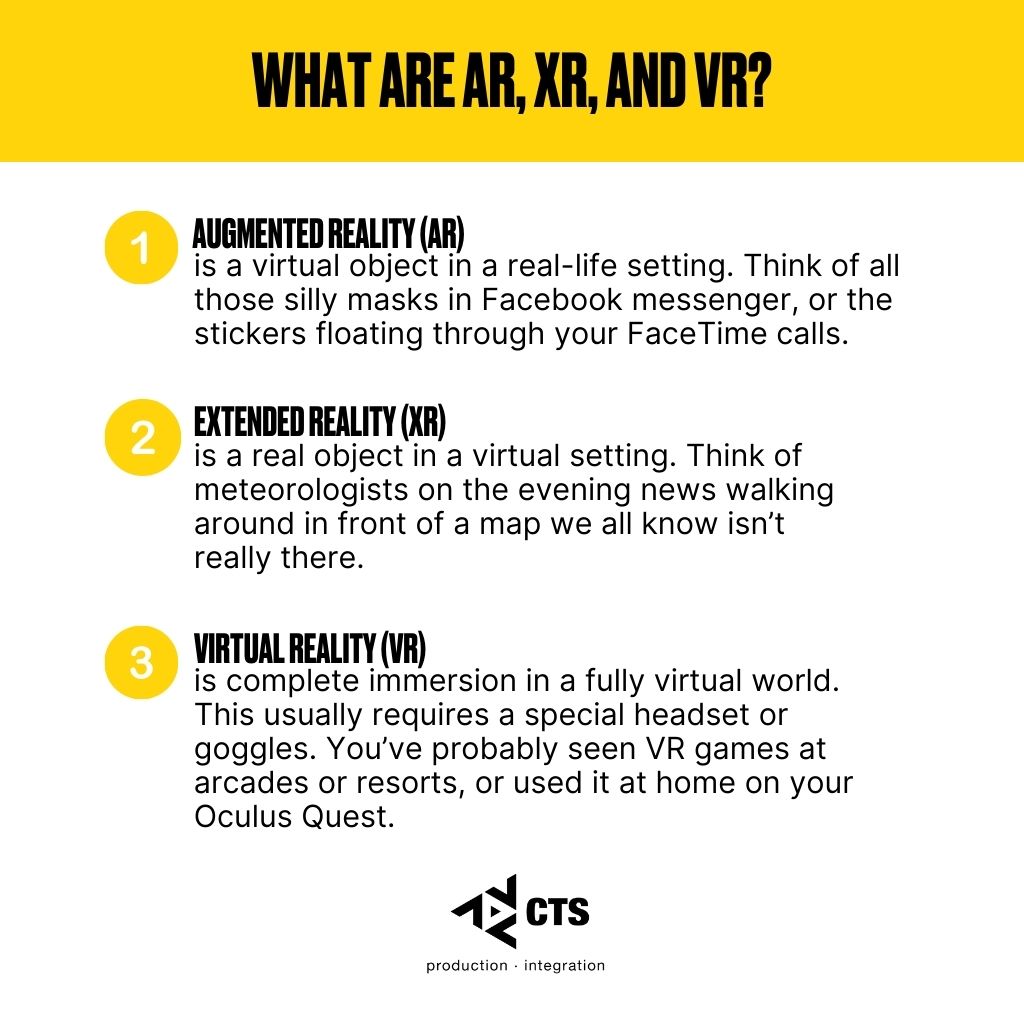AR, XR, and VR in the Church
Published on: Tuesday, July 26, 2022 - 7:00am

Was it really only a few years ago that Pokémon GO dropped and we started seeing players wandering around streets, stores, and heavily wooded areas with their phones waving in front of them?
Whether you played the game or not, you have to admit it was huge, and it represented an enthusiastic, large-scale adoption of a technology that had been brewing for years: augmented reality. Other adaptations of similar technology — extended reality and virtual reality — have made their way into our lives in ways we might not even register.
Let’s talk a little bit about how these three technologies might apply to the church environment and what benefits they could bring your church in the future.
What Are AR, XR, and VR?
Because people are continually finding new applications for these technologies, some of the terminology can get a little hairy. To help get us all on the same page, below are the current definitions we hear most often in our industry and what we’ll use for this article.
Augmented reality (AR) is a virtual object in a real-life setting. We use this all the time in simpler ways than a Pokémon-hunting video game. Think of all those silly masks in Facebook messenger, the stickers floating through your FaceTime calls, or that time you tried on a pair of Warby Parker glasses — on your laptop.

Extended reality (XR) is a real object in a virtual setting. Think of meteorologists on the evening news walking around in front of a map we all know isn’t really there. Or maybe think of the Avengers — real actors leaping around in projected outfits and environments.
Virtual reality (VR) is complete immersion in a fully virtual world. This usually requires a special headset or goggles to block out the real world and fully absorb your vision in the virtual world. You’ve probably seen VR games at arcades or resorts, or used it at home on your Oculus Quest. But VR isn’t just fun and games. The medical industry is trying out this technology for virtual surgeries, and you can even work out in the metaverse.
Some Churches Are Already Using AR, XR, and VR
Right now, not many churches have adopted this kind of reality-adjusting technology, which is just starting to take root in the world of ministry. A handful have started implementing aspects of it, however, such as fully virtual services using 360 cameras for people at home. Others have already begun to host virtual services, or have announced they’ll be bringing virtual services to an online congregation in the metaverse.
There are even rumors of some large churches pursuing this further, building studios capable of producing AR and XR content.
What Can These Technologies Offer the Church?
VR. It’s a reality that after 2020, not everybody has come back to in-person church services. Regardless of the reason for the drop off, streaming or broadcasted services have become a mainstay for reaching people at home.
But instead of imagining people watching a livestream on their screen, picture them logging in to a virtual site the church creates — and they’re in church. They can see others there with them, and they can participate in the worship. It’s a totally different experience than watching a screen.
VR also offers the possibility to see a moment from the Bible in first-person view. Imagine a Bible study on Daniel in which participants can walk through a virtual representation of the lion’s den.
A big question about VR is why. Why are churches considering this? The main answer is to reach people where they are.
Young people are plugged into technology now more than ever, often choosing to engage with online communities as much as or more than in-person ones. By meeting them where they are — online — churches may be able to interest and attract young people who wouldn’t otherwise step foot in an actual church building.
AR. Imagine walking through your church building and holding up a phone to various points of interest — a spiritual piece of art, for example — to learn more about what’s depicted. Or maybe you take a guided prayer walk with images and music queued to locations in the building as you follow a pre-planned path around the campus.
In Bible studies, participants could use their phones to hover over verses or study text to see videos, images, or maps that complement the material. A discipleship class could use AR to take a virtual tour of the Apostle Paul’s journey through the Middle East, complete with maps and cobblestone walkways. AR could help bring history to life in the modern day.
XR. XR offers its own exciting possibilities. For example, one church recently shot a sermon series “in Israel” by using a studio with XR technology to recreate locations from the Holy Land. The speaker was real, but appeared to be walking through Canaan and pointing out sites of interest.
One possible benefit of these new and interactive technologies is drawing people, especially young people, back into the building in an age of high expectations and short attention spans.
How Can Churches Use This Tech Now?
Church adoption of AR, XR, and VR technologies is still in its infancy, and we’re not suggesting everyone needs to move in this direction. Instead, if you’re interested in the idea, start by simply considering what the possibilities are for your church.
Look at the big blue chip companies, like Disney and its theme parks, and see what a seemingly unlimited budget does with this technology and how it reaches the audience. Consider the world of professional sports, especially the NBA, and their recent use of XR, especially in their pregame, halftime, and postgame sets. AT&T and Verizon are other big companies to keep eyes on. These leading entities can give you ideas of how to adapt and implement AR, XR, and VR for your church.
It’s important to understand that implementing any of these technologies will be a large undertaking. You’ll have a significant capital expenditure on the front end, followed by a long-term investment of resources to create the content once you have the infrastructure in place. If you’re more than a little interested, we recommend you run through an assessment to evaluate whether this kind of move makes sense.
The most important consideration for any new venture is always to make sure it aligns with your mission. Advances in technology are definitely fun and exciting, but if they don’t help you reach the community you want to serve, then they just aren’t worth your time or money.



